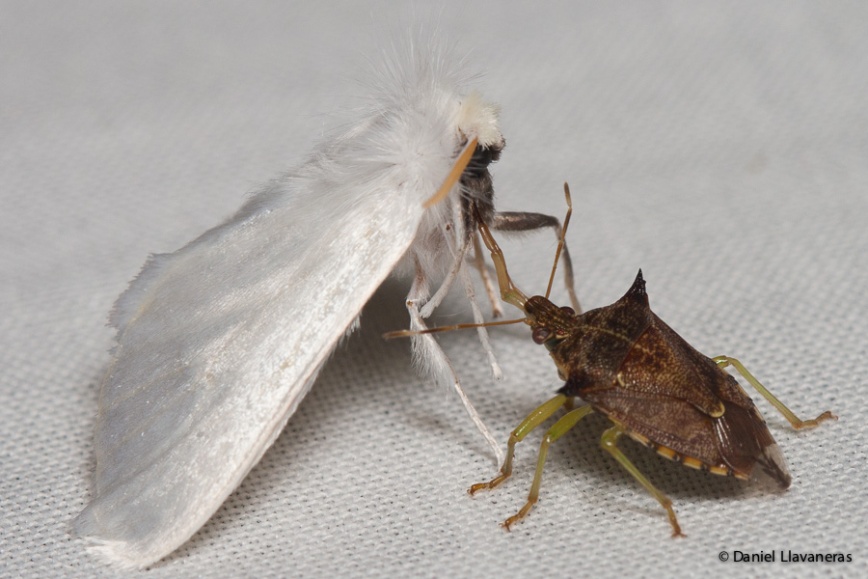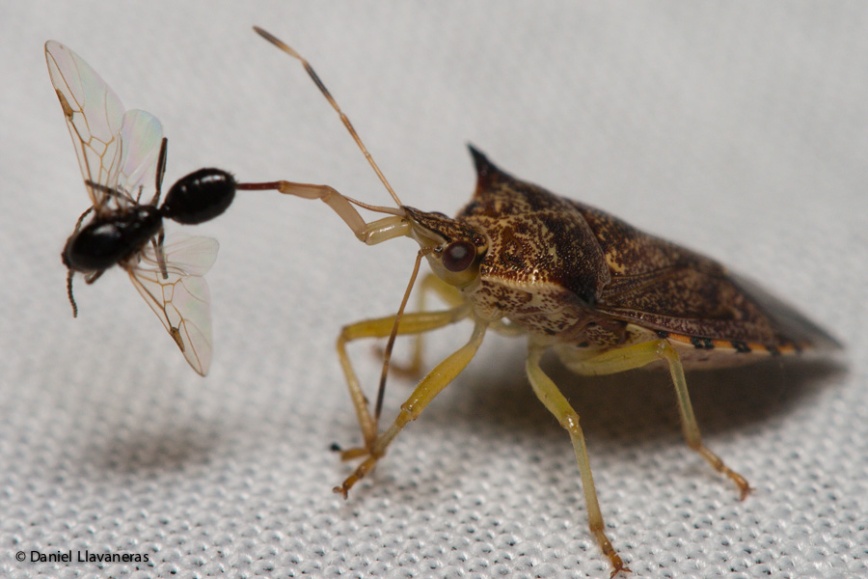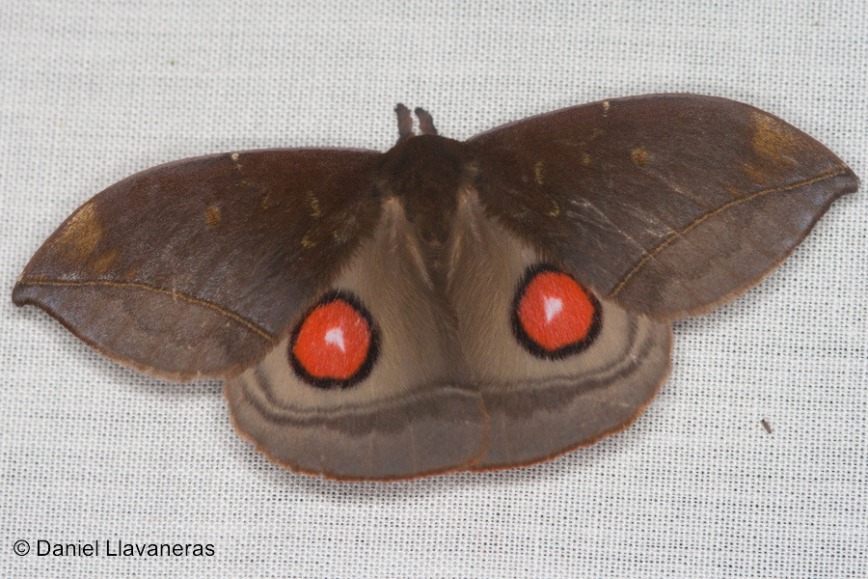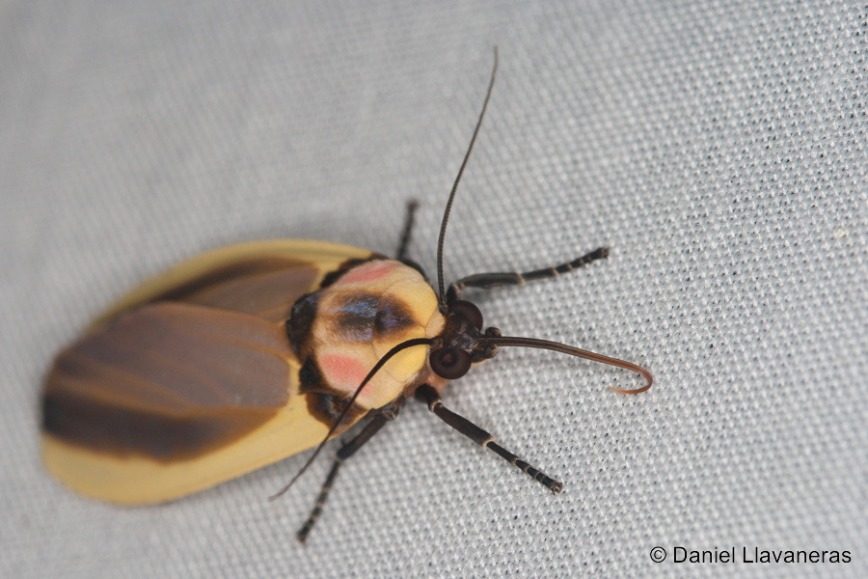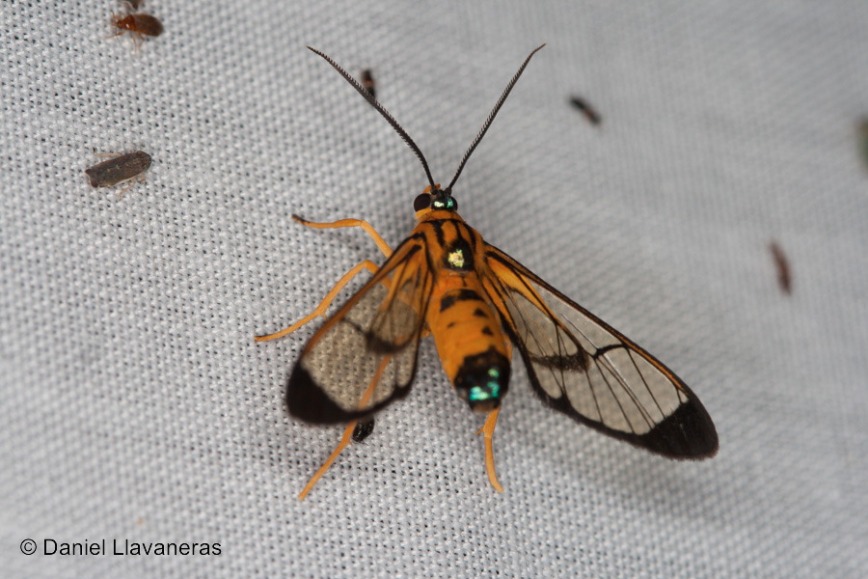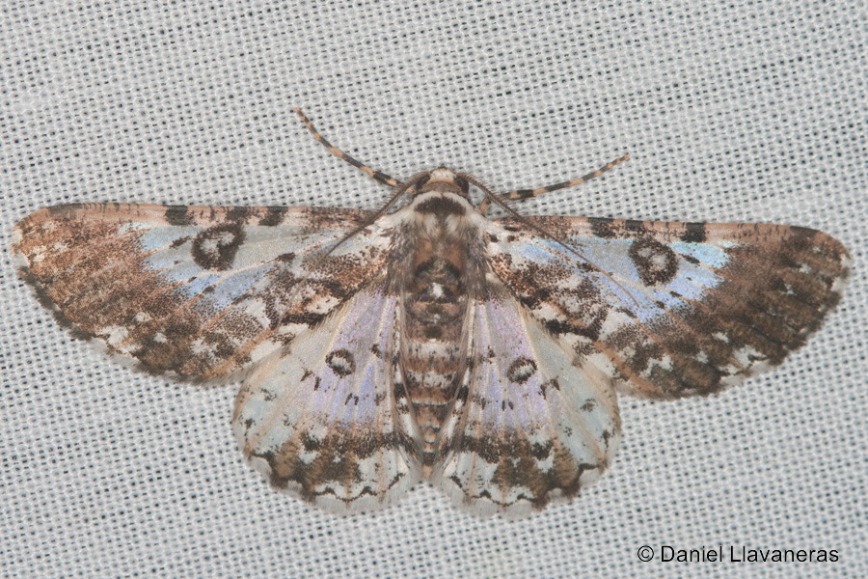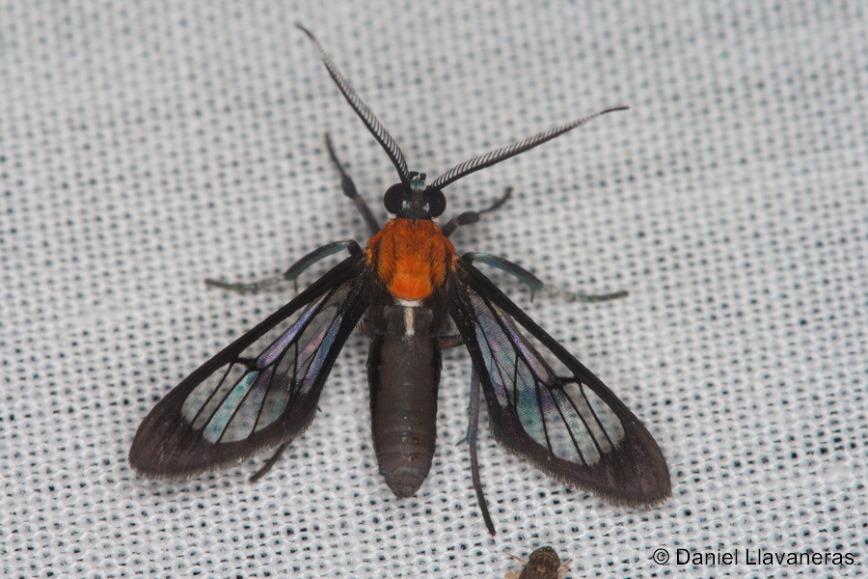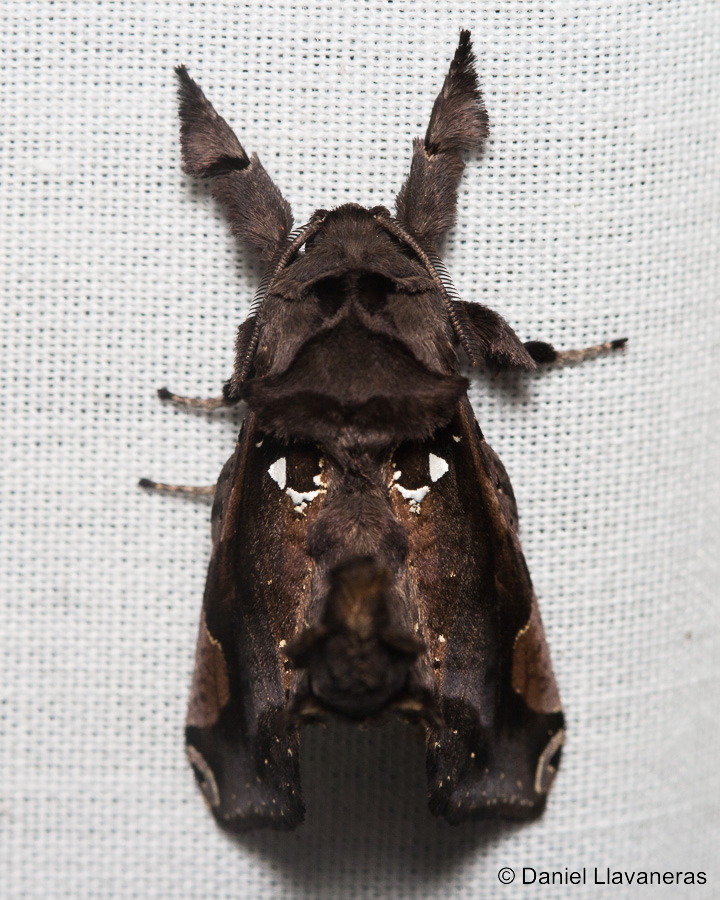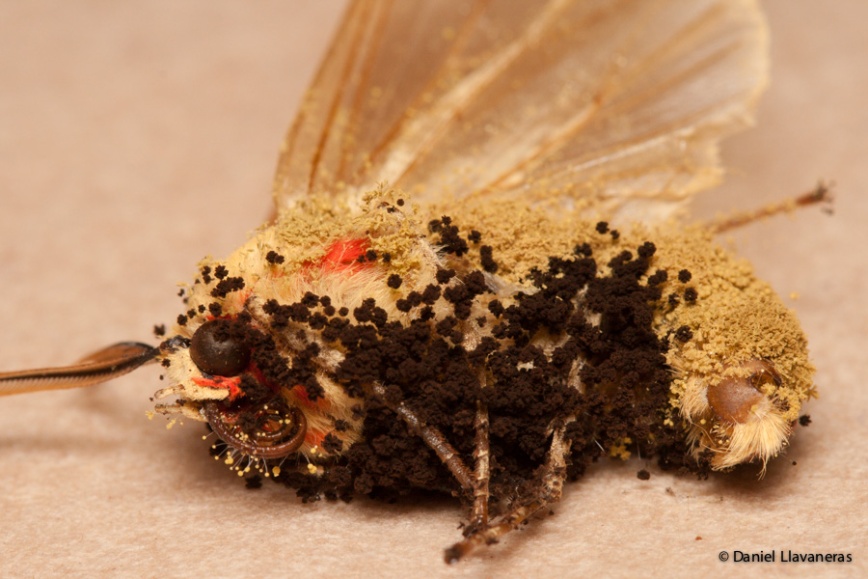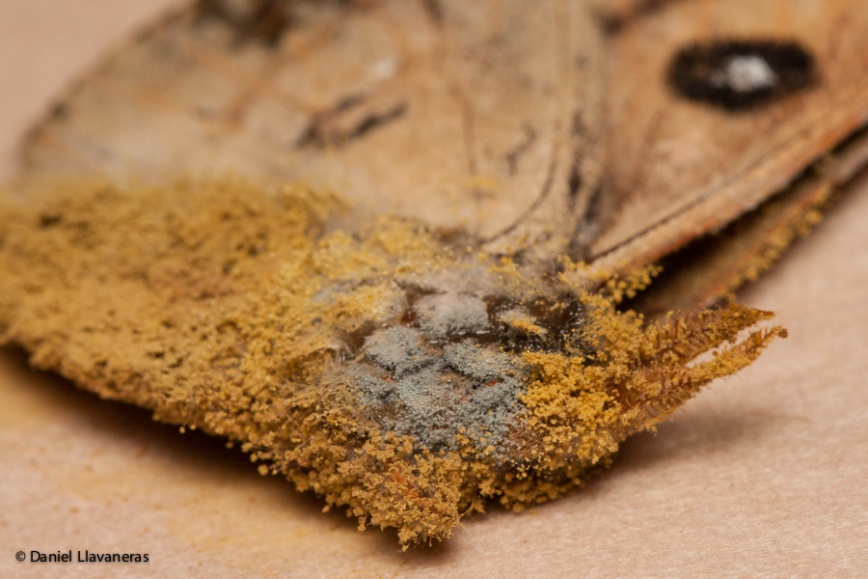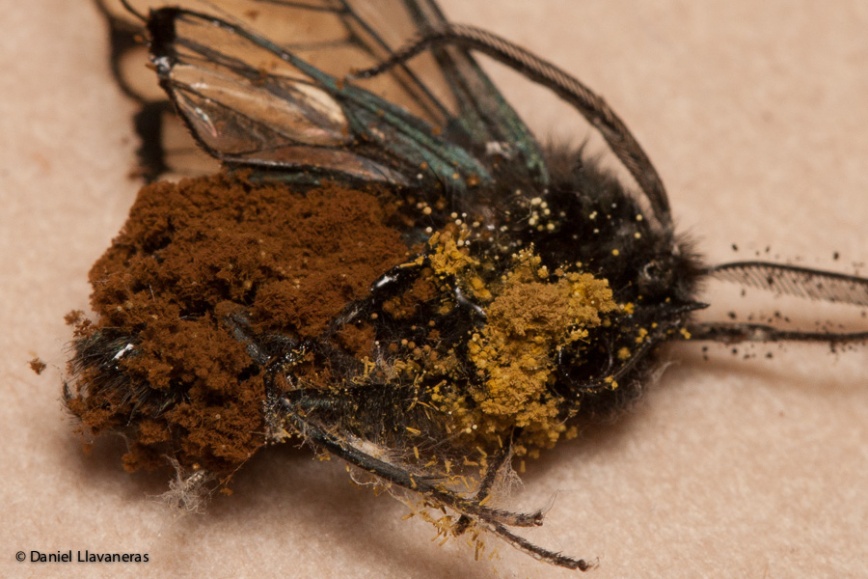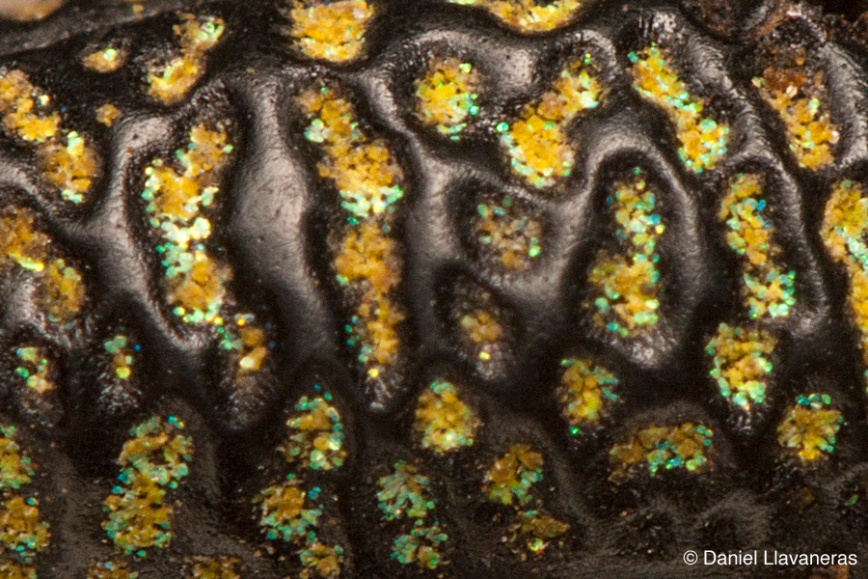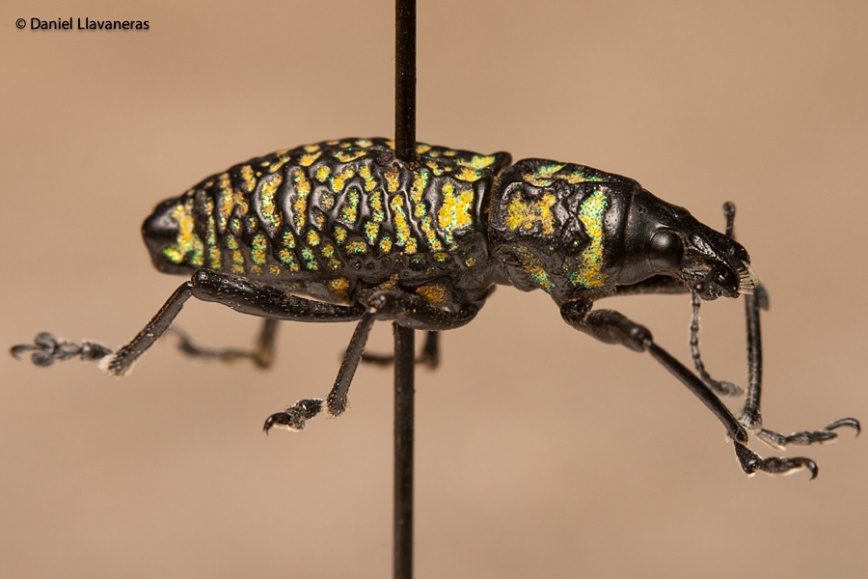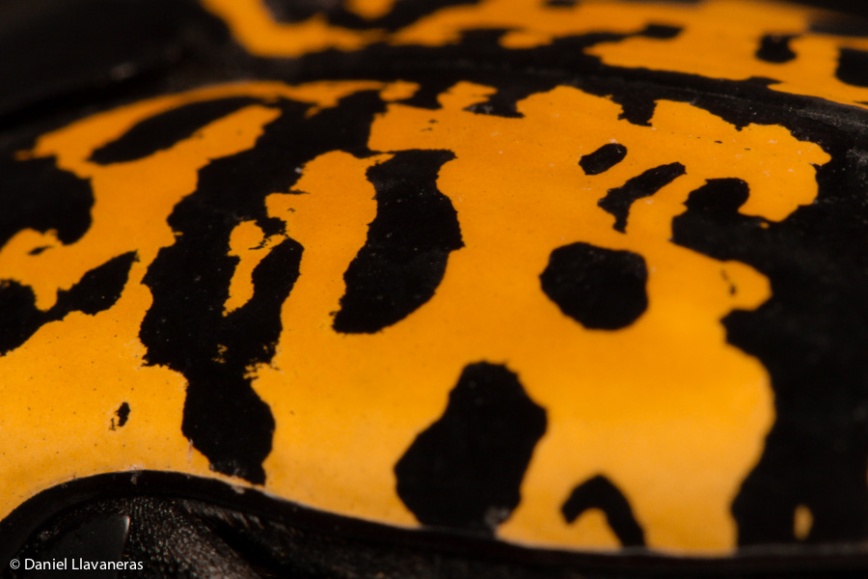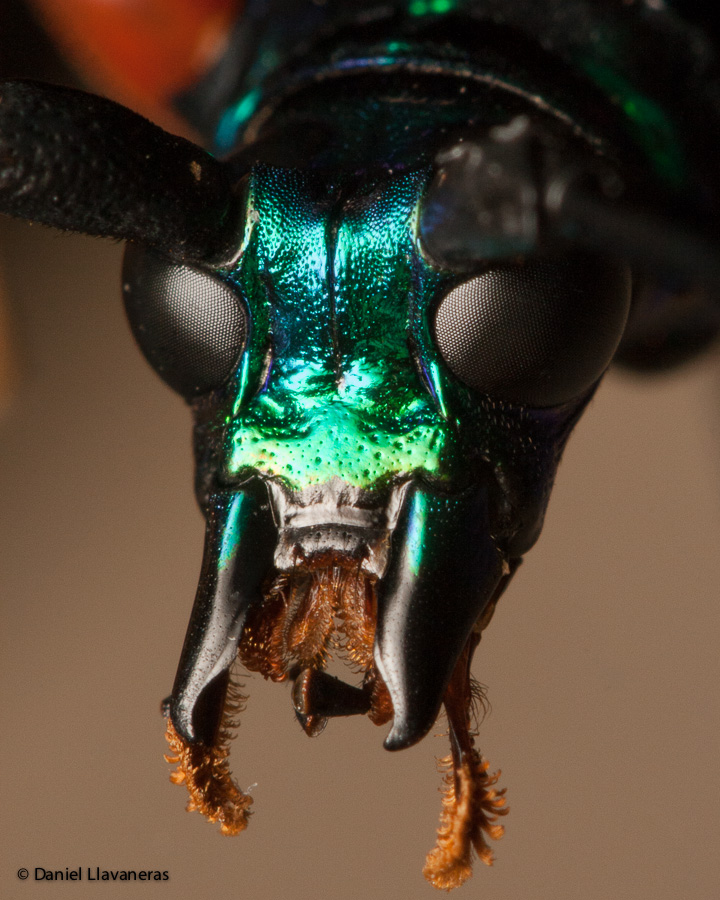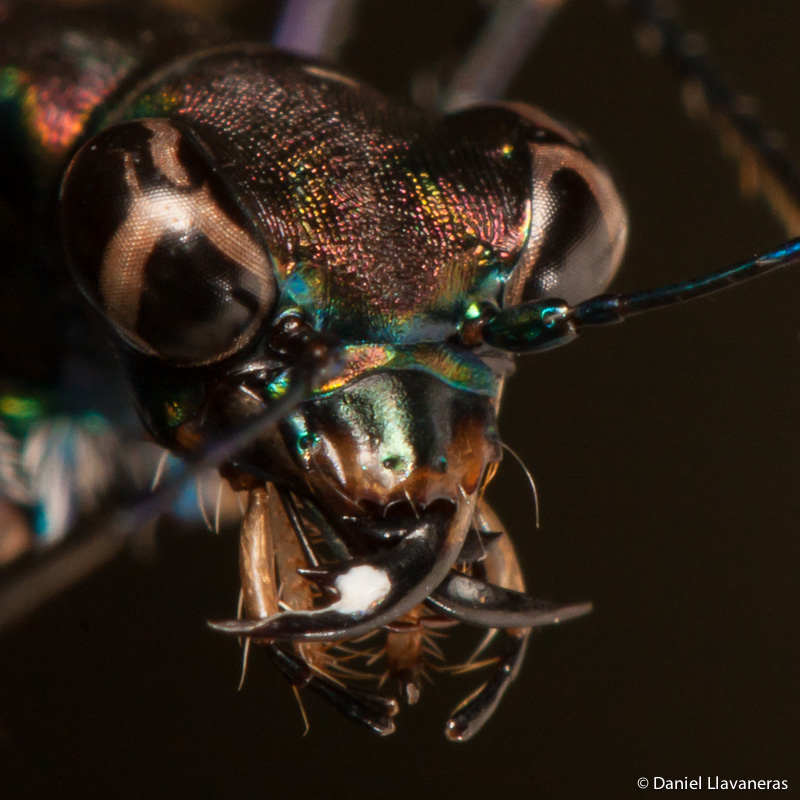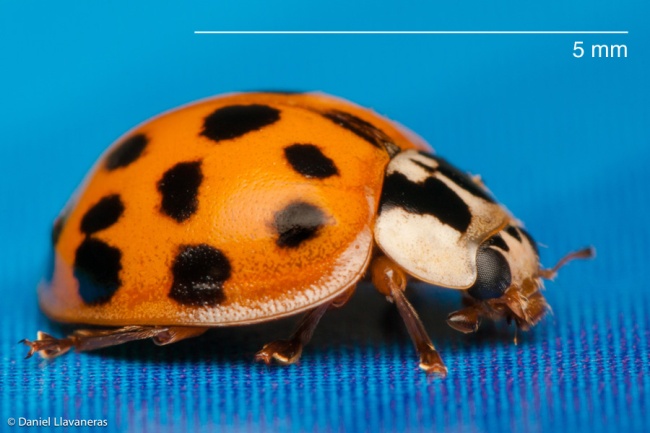When we learn about different animals, we are usually told about the big picture, the general characteristics that will help us identify a particular group. As we study specific classes/orders/families we come across some specimens that don’t quite match those broad guidelines, and it’s always a treat when we see them live and up close instead of reading about them in books and journals.
Today I went to my university’s campus to collect some insects. I was expecting to find some beetles, flies and grasshoppers, and maybe some aquatic insects, but not much else. While rolling over a log, we found this:
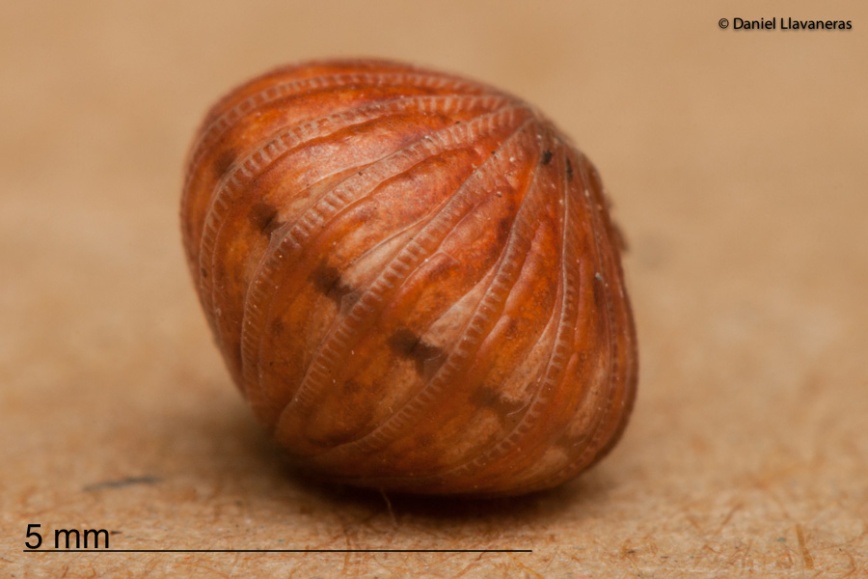 At first glance it looked like an arthropod egg of some sort, but then it started uncurling, revealing that it was actually an adult arthropod:
At first glance it looked like an arthropod egg of some sort, but then it started uncurling, revealing that it was actually an adult arthropod:
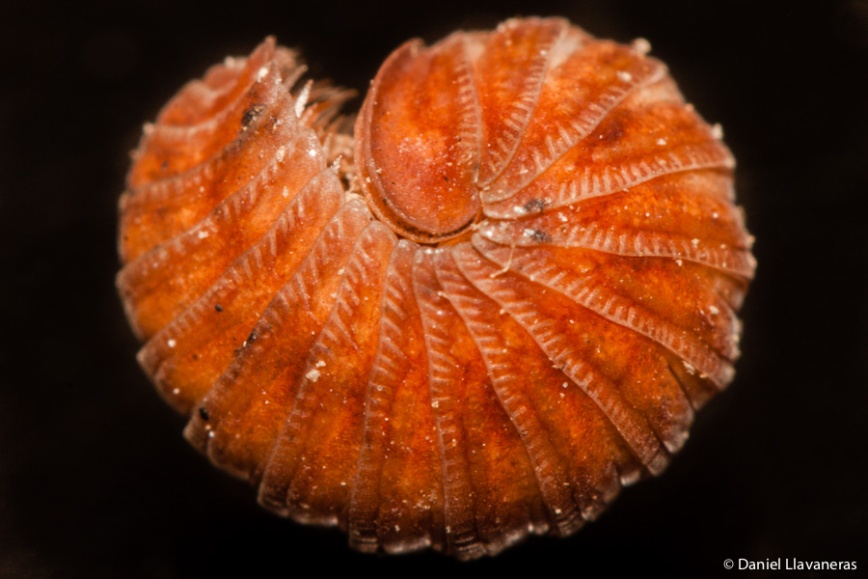 We’re usually told as kids that woodlice are the little bugs we find that can roll up into a little ball, but this particular specimen had too many segments to be an isopod, so I thought it might be a pill millipede and got excited. I had read about them, but I had never seen one in real life. When I got back home, I took a few pictures and noticed that some things didn’t quite match: My specimen had too many body segments (pill millipedes have 13 at the most, as far as I know), and the overall shape was different. It was much more stylized and “pointy”, whereas pill millipedes are rounder, at least the ones I had seen online.
We’re usually told as kids that woodlice are the little bugs we find that can roll up into a little ball, but this particular specimen had too many segments to be an isopod, so I thought it might be a pill millipede and got excited. I had read about them, but I had never seen one in real life. When I got back home, I took a few pictures and noticed that some things didn’t quite match: My specimen had too many body segments (pill millipedes have 13 at the most, as far as I know), and the overall shape was different. It was much more stylized and “pointy”, whereas pill millipedes are rounder, at least the ones I had seen online.
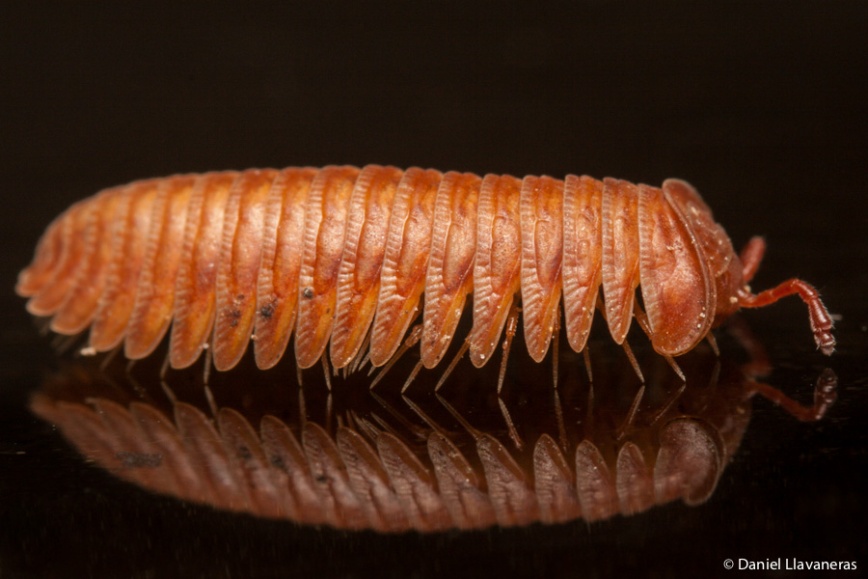 When I reviewed pictures of the cephalic region, I noticed that the first and second body segments formed a particular shape, like a bicorne hat similar to the one Napoleon Bonaparte wore:
When I reviewed pictures of the cephalic region, I noticed that the first and second body segments formed a particular shape, like a bicorne hat similar to the one Napoleon Bonaparte wore:
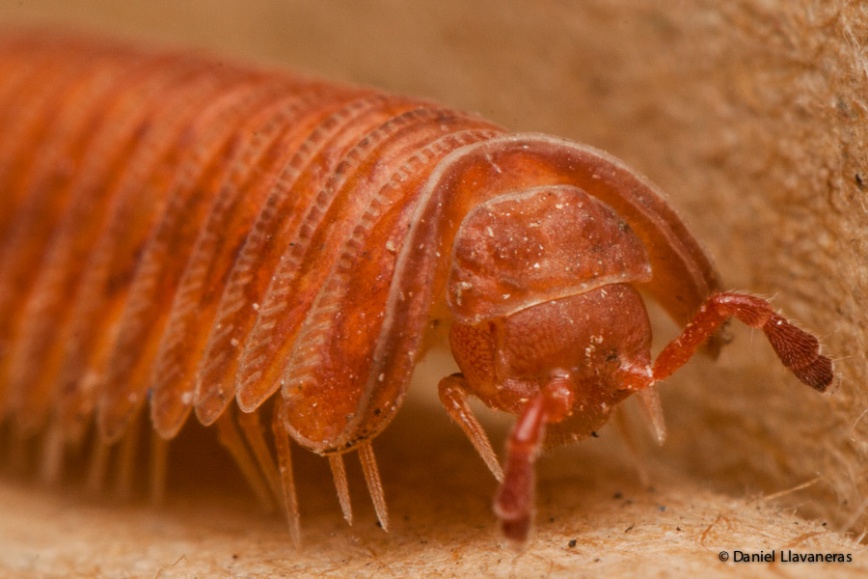 While odd, it makes perfect sense; the end of the body aligns with the union of the first and second segments when the millipede is curled up.
While odd, it makes perfect sense; the end of the body aligns with the union of the first and second segments when the millipede is curled up.
I still don’t know to which group this millipede belongs, and I welcome any input regarding an ID; I have three specimens at home in case more pictures need to be taken.
Now, finding one creature you’ve never seen before in a place you visit often is great, but seeing two in one day is remarkable. While glancing at some leaves, I saw what, from a distance, looked like a group of gregarious caterpillars:
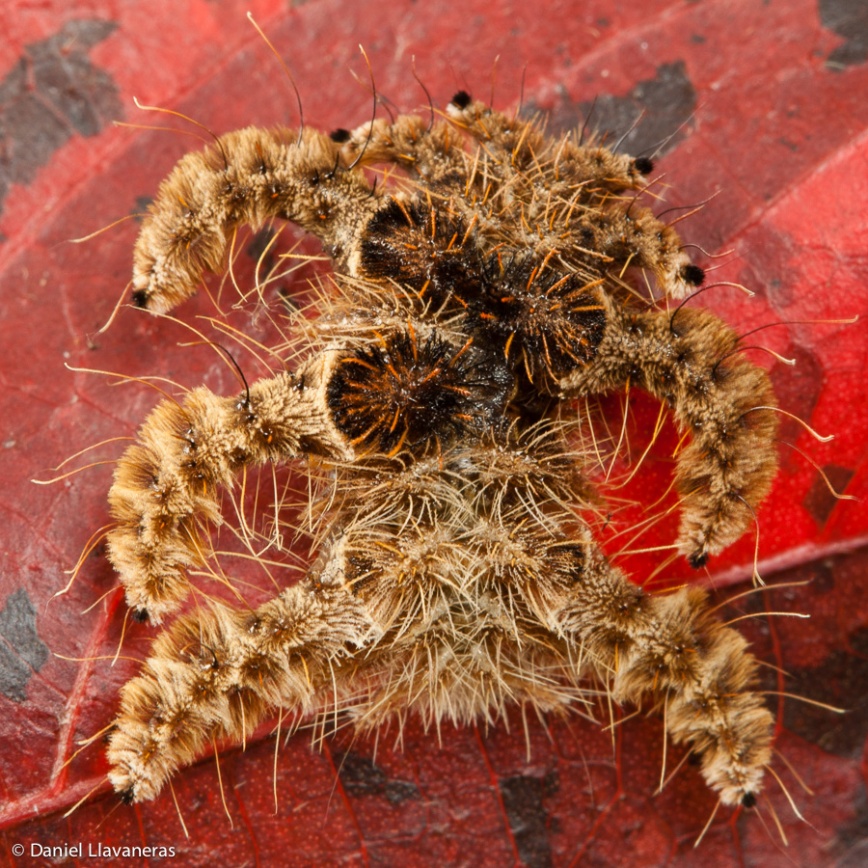 Keep in mind that I was a few feet away, and my first thought was something I had seen before: gregarious Catasticta caterpillars, with their light colored bodies and dark heads, both covered in hairs. They tend to stay together, even different instars:
Keep in mind that I was a few feet away, and my first thought was something I had seen before: gregarious Catasticta caterpillars, with their light colored bodies and dark heads, both covered in hairs. They tend to stay together, even different instars:
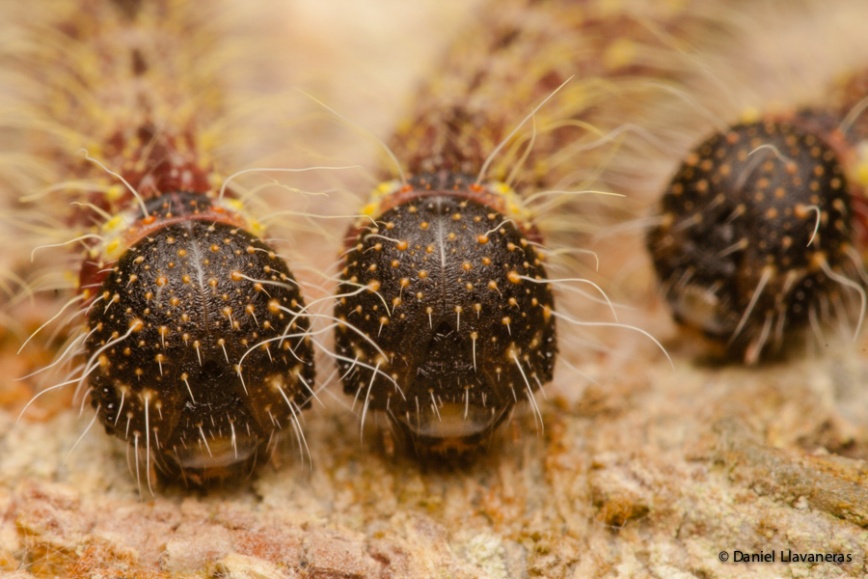 I asked a colleague to come take a look, and she poked it with tweezers. It was then that we realized that it was just one caterpillar, and not several. We were excited to see this for the first time: it was a hag moth caterpillar (family Limacodidae). We turned it over, and there it was, definitely a single caterpillar:
I asked a colleague to come take a look, and she poked it with tweezers. It was then that we realized that it was just one caterpillar, and not several. We were excited to see this for the first time: it was a hag moth caterpillar (family Limacodidae). We turned it over, and there it was, definitely a single caterpillar:
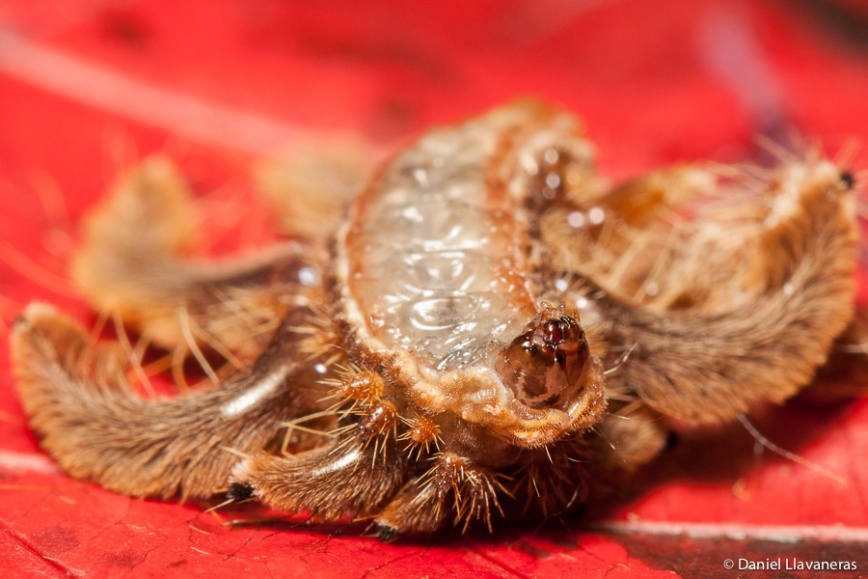 These caterpillars are quite interesting; they don’t have well developed prolegs, and they move in a worm-like fashion. Now, we were looking at it and discussing the advantages of the fleshy appendages, which lead us to ask ourselves how it would roll over. Cylindrical caterpillars usually just twist their bodies along their axis 180 degrees, and that is usually enough to allow the legs to grab on to something and roll over. But this caterpillar can’t do that, since its reduced legs and dorsal appendages don’t allow for such maneuvers. So how would it turn over?
These caterpillars are quite interesting; they don’t have well developed prolegs, and they move in a worm-like fashion. Now, we were looking at it and discussing the advantages of the fleshy appendages, which lead us to ask ourselves how it would roll over. Cylindrical caterpillars usually just twist their bodies along their axis 180 degrees, and that is usually enough to allow the legs to grab on to something and roll over. But this caterpillar can’t do that, since its reduced legs and dorsal appendages don’t allow for such maneuvers. So how would it turn over?
Simple: It did an assisted backflip.
The caterpillar stretched its head and front of its body backwards, until its mandibles were able to bite the leaf it was on, and then it contracted all of its ventral longitudinal muscles so that the body rolled over its head and landed right side up.
I’ve said it once and I’ll say it again: the insect world is awesome!
